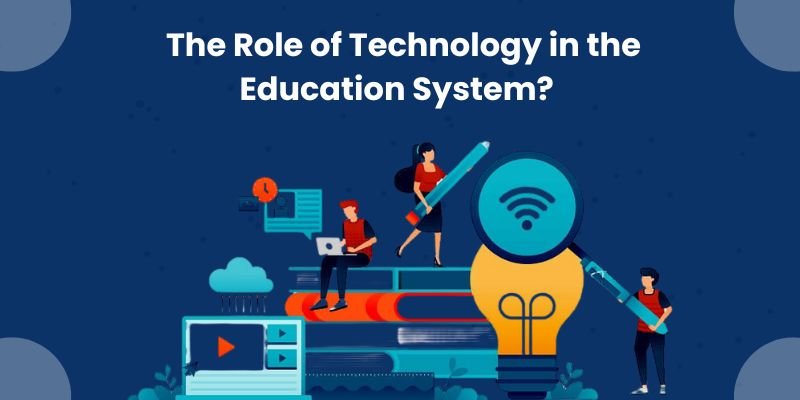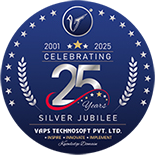Technology is reshaping education, turning traditional classrooms into vibrant, interactive spaces filled with innovation. As digital learning tools and educational tech continue to evolve, both teachers and students are experiencing a significant shift in how knowledge is shared and absorbed. This article dives into the many ways technology plays a role in teaching and learning, showcasing its benefits, key tools, challenges, real-life examples, and future trends—all aimed at empowering learners for the 21st century.
Benefits of Integrating Technology in Education
Bringing modern technology into education comes with a host of benefits that enrich the overall learning experience. Here are some standout advantages:
Enhanced Student Engagement and Motivation
The introduction of digital learning tools in classrooms has completely transformed how students engage with their studies. With interactive multimedia, gamified lessons, and virtual simulations, students are not just passive recipients of information; they’re actively involved, curious, and eager to participate. This increased engagement not only boosts motivation but also leads to better academic results.
Facilitation of Personalized Learning Experiences
Every student is different, and technology in education allows for personalized learning on a larger scale. Adaptive learning platforms and real-time digital assessments give teachers the tools they need to tailor lessons to meet each student’s unique needs. This focused approach promotes inclusivity and ensures that every learner gets the support they need to thrive.
Improved Access to Educational Resources
Digital platforms are breaking down barriers in education by making a wealth of learning resources available to everyone. No matter where they are or their economic situation, students can access a treasure trove of knowledge—from online libraries to tutorials led by experts—expanding their educational opportunities like never before.
Development of Essential 21st-Century Skills
Bringing technology into the classroom is a game-changer for developing key skills like digital literacy, problem-solving, and effective communication. These abilities are crucial in today’s job market, equipping students to tackle future challenges and seize opportunities. When we integrate educational technology, we create a space where learners aren’t just absorbing information; they’re actively creating and collaborating.
Increased Collaboration and Communication
Today’s digital tools make it easier than ever for students and teachers to communicate and work together. With shared online platforms, real-time document editing, and interactive discussion forums, group projects become more engaging and productive. These experiences help build teamwork, critical thinking, and interpersonal skills that are vital for success in both academics and the workplace.
Key Technologies Transforming Education
Innovative technologies are continuously reshaping the landscape of education. Here are some of the digital solutions leading this exciting transformation:
Digital Learning Platforms and Online Resources
Learning management systems and online course platforms offer a structured framework that supports flexible learning schedules. These platforms enable educators to create engaging courses filled with interactive content, real-time feedback, and detailed analytics, ensuring a strong integration of educational technology.
Interactive Whiteboards and Smart Classrooms
The era of static chalkboards is behind us. Interactive whiteboards and smart classrooms have completely transformed the learning environment by allowing for multimedia presentations and real-time interaction. These tools help keep students engaged and foster a collaborative, immersive classroom experience.
Mobile Learning and Educational Apps
With smartphones and tablets everywhere, mobile learning has taken off. Educational apps span a wide range—from language learning to STEM simulations—empowering students to learn whenever and wherever they want. This portability enhances the continuity of education beyond the traditional classroom.
Virtual and Augmented Reality in Learning
Virtual and augmented reality (VR/AR) technologies offer immersive learning experiences that make abstract concepts tangible. VR environments let students explore historical sites or conduct virtual science experiments, while AR adds digital information to the real world. These innovative methods create engaging and unforgettable educational experiences.
Cloud Computing and Big Data in Education
Cloud computing and big data analytics are transforming how educational content is managed. Cloud-based platforms provide secure data storage and resource sharing, while big data enables educators to analyze trends and customize their teaching methods. This integration simplifies administrative tasks and supports data-driven decision-making in education.
Challenges and Considerations
While there are plenty of advantages to bringing technology into education, it definitely comes with its own set of challenges. Tackling these issues is essential to
really make the most of digital learning tools.
Addressing the Digital Divide
One major hurdle is making sure everyone has fair access to technology. In many areas, there are significant gaps in digital infrastructure, which can limit students’ access to crucial learning resources. Closing this digital divide is key to ensuring that all students can take advantage of the latest educational tools.
Ensuring Data Privacy and Security
As we rely more on digital platforms, it’s crucial to protect sensitive student information. Schools need to put strong cybersecurity measures in place to keep personal data safe and comply with data protection laws. This is essential for building trust and ensuring security in online learning environments.
Balancing Screen Time and Traditional Learning Methods
Even though digital tools can be incredibly helpful, too much screen time can have negative effects. Teachers need to find a sweet spot between using technology and maintaining traditional hands-on learning experiences. This balanced approach supports overall development and helps minimize health issues linked to extended screen exposure.
Providing Adequate Teacher Training and Support
The effectiveness of technology in education really hinges on how well teachers can use it. Ongoing professional development and support are crucial for educators to successfully incorporate digital learning tools into their lessons. Investing in teacher training is a vital step toward achieving successful integration of educational technology.
Future Trends in Educational Technology
As we dive deeper into the digital age, a few exciting trends are emerging that are set to revolutionize the education landscape.
Artificial Intelligence and Machine Learning in Education
Artificial intelligence (AI) and machine learning are leading the charge toward more personalized learning experiences. With AI-powered tutoring systems and adaptive learning algorithms, we can analyze student performance in real time, offering tailored feedback and customized instructional content that truly supports each learner’s unique journey.
The Rise of Gamification and Game-Based Learning
Gamification is quickly becoming a popular and engaging way to approach education. By weaving game elements into learning modules, teachers can inspire students through challenges, rewards, and interactive storytelling. This trend not only boosts engagement but also fosters critical thinking and problem-solving skills.
The Role of Blockchain in Credentialing and Assessment
Blockchain technology is stepping in to provide a secure and transparent method for managing academic credentials and assessments. Its decentralized and tamper-proof characteristics ensure that student records and certificates can be easily verified, tackling concerns about data integrity and security in educational settings.
5G and the Internet of Things (IoT) in Education
With the rollout of 5G networks and the integration of IoT devices in classrooms, we’re looking at a future filled with more connected and interactive learning environments. The faster internet speeds and real-time data exchange will enable innovative teaching methods and more responsive digital platforms, making sure that our education system keeps up with the rapid pace of technological advancements.
FAQs
How has technology changed the way we educate?
Digital learning tools and interactive technologies have transformed education from a traditional, teacher-led approach to a more engaging, student-focused model. This shift creates a more dynamic and personalized learning experience for everyone involved.
What are the key advantages of using technology in the classroom?
The advantages include increased student engagement, tailored learning experiences, better access to global educational resources, and the development of crucial 21st-century skills like digital literacy, teamwork, and critical thinking.
Are there any obstacles to using technology in education?
Absolutely, some challenges include tackling the digital divide, ensuring data privacy and security, finding the right balance between screen time and traditional teaching methods, and providing sufficient training for teachers. Addressing these issues is vital for successfully integrating technology.












